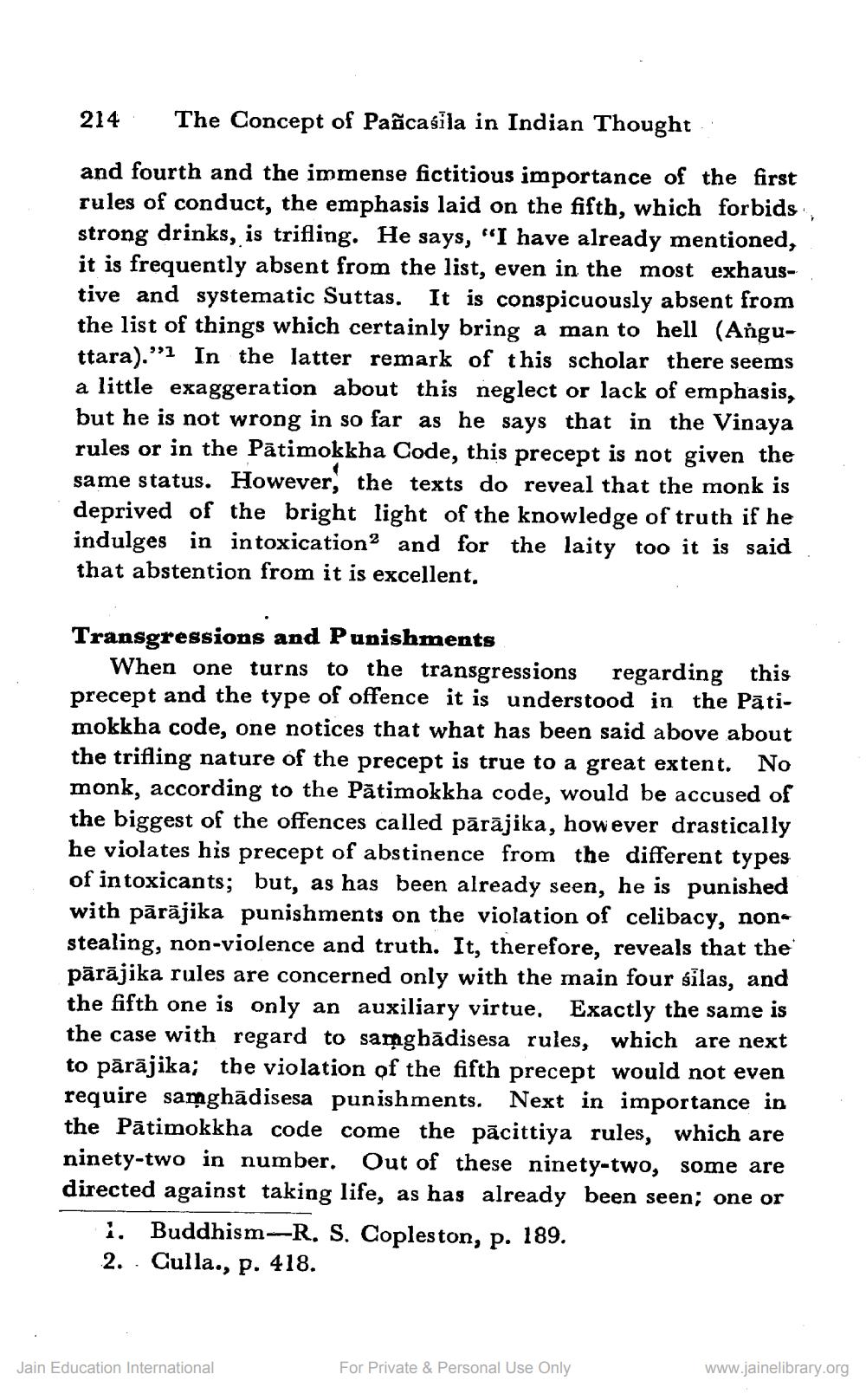________________
214
The Concept of Pañcasila in Indian Thought
and fourth and the immense fictitious importance of the first rules of conduct, the emphasis laid on the fifth, which forbids, strong drinks, is trifling. He says, "I have already mentioned, it is frequently absent from the list, even in the most exhaustive and systematic Suttas. It is conspicuously absent from the list of things which certainly bring a man to hell (Anguttara).”] In the latter remark of this scholar there seems a little exaggeration about this neglect or lack of emphasis, but he is not wrong in so far as he says that in the Vinaya rules or in the Pātimokkha Code, this precept is not given the same status. However, the texts do reveal that the monk is deprived of the bright light of the knowledge of truth if he indulges in intoxication and for the laity too it is said that abstention from it is excellent.
Transgressions and Punishments
When one turns to the transgressions regarding this precept and the type of offence it is understood in the Pātimokkha code, one notices that what has been said above about the trifling nature of the precept is true to a great extent. No monk, according to the Pātimokkha code, would be accused of the biggest of the offences called pārājika, however drastically he violates his precept of abstinence from the different types of intoxicants; but, as has been already seen, he is punished with pārājika punishments on the violation of celibacy, nonstealing, non-violence and truth. It, therefore, reveals that the pārājika rules are concerned only with the main four silas, and the fifth one is only an auxiliary virtue. Exactly the same is the case with regard to samghādisesa rules, which are next to pārājika; the violation of the fifth precept would not even require samghādisesa punishments. Next in importance in the Pātimokkha code come the pācittiya rules, which are ninety-two in number. Out of these ninety-two, some are directed against taking life, as has already been seen; one or
1. Buddhism-R. S. Copleston, p. 189. 2. . Culla., p. 418.
For Private & Personal Use Only
Jain Education International
www.jainelibrary.org




